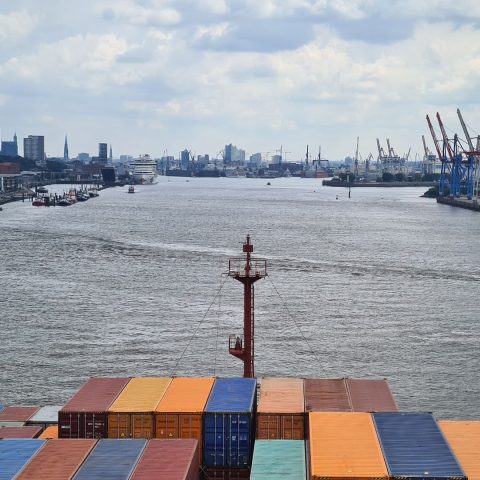
Hapag-Lloyd’s profit slumps in line with market development
Hapag-Lloyd’s profit for the first nine months reflects the severe change in the market conditions over the year, with the shipping major posting a net profit of $3.4 billion. This is a $11.2 billion drop compared to the first nine months of 2022.
The company added that it has now split its activities into Line Shipping and Terminal & Infrastructure segments for the first time, all due to the expansion of its terminal business.
With the further expansion of its terminal business, the Hapag-Lloyd Group’s business activities have also been split for the first time into Liner Shipping and Terminal & Infrastructure segments.
Liner Shipping revenues slump
During the first nine months of 2023, the Liner Shipping segment experienced a decrease in EBITDA, dropping to $4.5 billion. The main reason for this was a decrease in revenue, which fell to $15.2 billion. This was primarily due to a lower average freight rate of $1,604 per TEU, compared to $2,938 per TEU in the previous year. The third quarter of 2023 saw an even bigger drop in freight rates, to $1,312 per TEU (compared to $3,106 per TEU in Q3 2022), with several trades experiencing even lower rates than in the same period the previous year.
However, it’s not all bad news. Transport volumes actually improved in the third quarter, rising by just under 5 per cent to 3,110 TTEU (compared to 2,975 TTEU in Q3 2022). As a result, the combined volumes of 8,916 TTEU in the first nine months of the year were almost on par with those of the previous year (8,987 TTEU).
Transport expenses experienced a year-on-year decrease of 11 per cent, dropping to $9.6 billion. This was due in particular to the ongoing normalization of global supply chains, as well as a lower average bunker consumption price of $611 per tonne.
Terminal & Infrastructure segment gets going
In the Terminal & Infrastructure segment, an EBITDA of $38 million was achieved in the first nine months of 2023. Since the new segment is still in the process of being formed, it does not reflect the results of a full nine-month period. It comprises Hapag-Lloyd’s stakes in 20 terminals in Europe, Latin America, the United States, India and North Africa as well as other infrastructure participations.
“Thanks to an increase in transport volumes in the third quarter, volumes are roughly flat for the nine-month period compared to 2022. At the same time, we have continued to implement our strategic agenda, expanded our terminal portfolio, and boosted customer satisfaction again through quality improvements. However, freight rates are below the prior-year level and, as expected, fell again in the third quarter – which is reflected in much lower earnings. In response, we are working hard to reduce our expenses even more, such as by achieving savings on the procurement side and making adjustments to our service network. Nevertheless, if spot rates do not recover, we could face some challenging quarters in this subdued market environment,” said Rolf Habben Jansen, CEO of Hapag-Lloyd AG.
Outlook
Hapag-Lloyd has confirmed that the business development in the first nine months of 2023 is going according to plan. The company maintained its financial forecast for the current year, which was published on March 2, 2023. The group EBITDA is now expected to be between $4.5 billion and $5.5 billion, compared to the previous forecast range of $4.3 billion to $6.5 billion.
However, the outlook is uncertain due to various geopolitical conflicts, high inflation, and high customer inventories. The forecast for the 2023 financial year is based on the assumption that transport volumes will increase slightly, while the average freight rate is expected to fall significantly.
The recovery of supply chains and implementation of cost-reduction measures should lead to a decrease in transport expenses. This development should be supported by a significantly lower bunker consumption price. However, higher expenses due to inflation are expected to weaken the cost recovery.
You just read one of our premium articles free of charge
Register now to keep reading premium articles.



